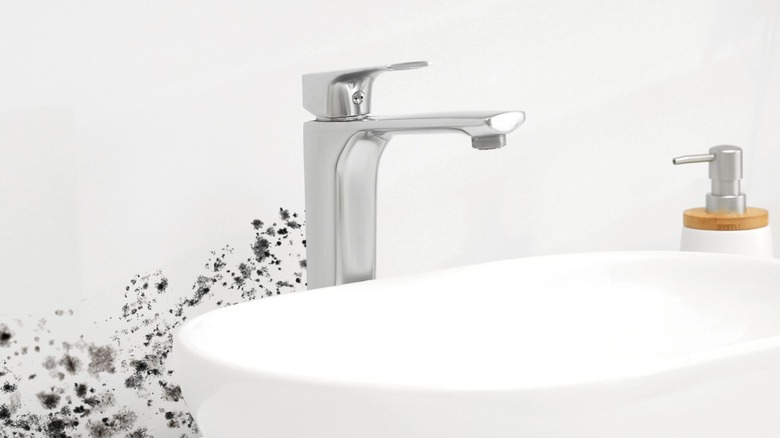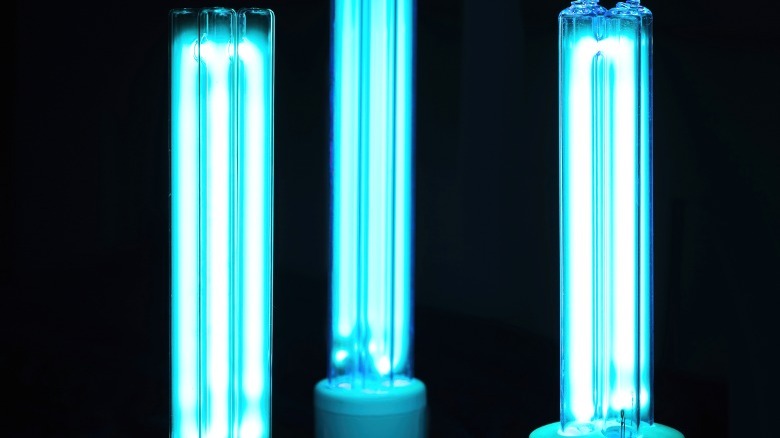Should You Use A UV Light Treatment To Kill Unsightly Mold At Home?
With nearly 50% of homes having some form of mold, it's a safe bet you'll have to battle this creeping menace at some point or another. Fortunately, there's no shortage of DIY or professional solutions to combat mold, ranging from vinegar to bleach to UV light. UV-C, a particular wavelength of UV light, is a notably efficient control method that disrupts mold's DNA and inhibits reproduction. It doesn't degrade many common household materials like vinegar can, nor does it put potentially hazardous chemicals in the air, which is one of the major problems with using bleach. Beyond mold, UV-C light effectively kills bacteria and other dangerous microbes. UV-C is so effective, in fact, that Columbia and British researchers recently found far-UVC light installations can deactivate up to 98% of airborne bacterial and viral microbes in only 5 minutes.
UV-C isn't without its issues though. UV light may degrade plastic materials over time, and UV-C is as harmful to people as it is to the microbes it targets, opening anyone exposed to it to cumulative effects, including skin cancer and cataracts. When combating mold, UV-C is also only effective against anything it can shine on. Any growth hidden from the light in nooks and crannies remains largely unaffected. Putting these considerations together, UV light is only sensible in certain instances, and you'll likely need additional treatment methods to fix your mold issues.
Is UV light practical for mold in the home?
UV-C's germicidal capacity makes it an oft-used solution in commercial areas. In recent years, water treatment facilities, food producers, and hospitals, where sterilization is a top concern, have taken a keen interest in its efficacy. In the home, UV-C is frequently seen as a viable fix for mold in HVAC systems. Lamps in the evaporator coil and air vents can destroy mold, bacteria, and viruses, supplying a non-toxic way to clean the air circulating in the house. But is it the best solution for cleaning everyday mold growth in bathrooms, kitchens, and other damp areas?
When you look at the process and the results, the answer will likely be "no". Depending on the type of mold, UV-C can take several hours to deactivate the growth (at least, any mold in the light's path). That might be more time than you're willing to allot when you want to move on with your day. Furthermore, UV light doesn't actually clean the area; it only deactivates the mold. Even dead spores can cause allergic reactions. You'll still have to follow up with a cleaning solution to clear the stain and minimize the mold's harmful effects. Can UV have benefits in an integrated approach? Sure. It doesn't promote resistant pathogens like many chemical cleaners, and UV can help you find hidden bacteria lingering on household surfaces. But if you want to save time, money, and effort, sticking with tried-and-true mold killers is almost always the best option.

